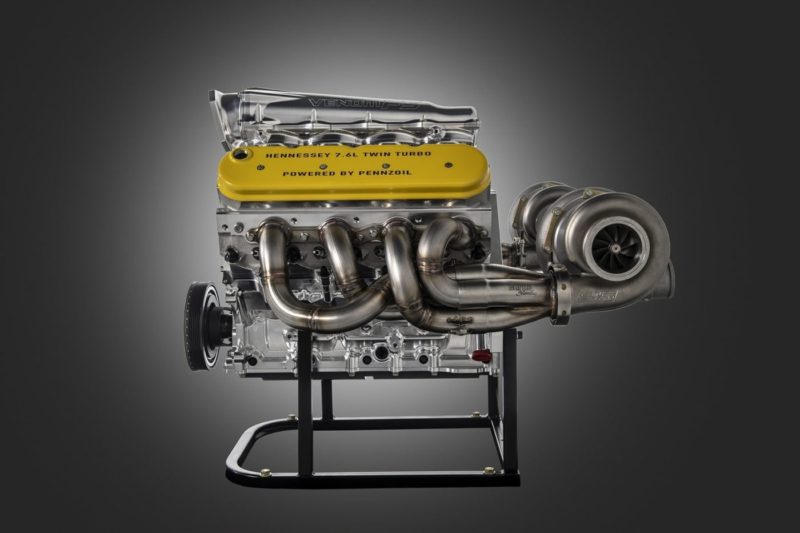The Hennessey Venom F5 is the successor to the Venom GT, but it is not limited by a Lotus chassis. Hennessey is touting that this engine creates over 1,600 horsepower and 1,300 lb-ft of torque, but many are wondering how they do it. Some have tried to explain it, but I’m here to give a quick breakdown of this wild engine.
Hennessey is building this engine using the best parts in the industry. Of course, this architecture is based on the Chevrolet LS series, but only in appearance. Their specifications for a bespoke engine block could only be met by one supplier. Noonan Racing is based in Australia, and they specialize in big LS engines. Their tall-deck block is cut from a single block on billet aluminum. It was designed to Hennessey’s specifications, with priority oiling and a raised cam tunnel.
While the block is capable of being machined for 8-liters, Hennessey scaled back to allow for long-term reliability. Since the cam sits higher in the block, it has a better angle to the rocker arms. This makes the valvetrain more efficient since the timing chain will be easier to spin. Also incorrect are the assumptions that these are LS7 heads. No GM production vehicle has 6 head bolts per cylinder. The extra row of bolts below the exhaust ports is mirrored by another row in the intake valley.
Noonan’s heads have a different valve cover design, so the Venom F5 is something unprecedented. Therein lies Hennessey’s secret sauce. The valve size, along with their angles are proprietary. The camshaft has unique ramp rates and duration to take advantage of both turbos, and the headers won’t be easily duplicated.
They also say the water pump was missing and replaced with a cover? No, that is a 2-piece timing chain cover with some amazing machine work.
If this was something off-the-shelf, it wouldn’t be capable of 1,600 horsepower and 1,300 lb-ft of torque.
